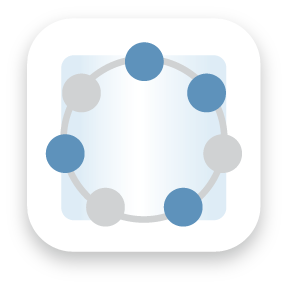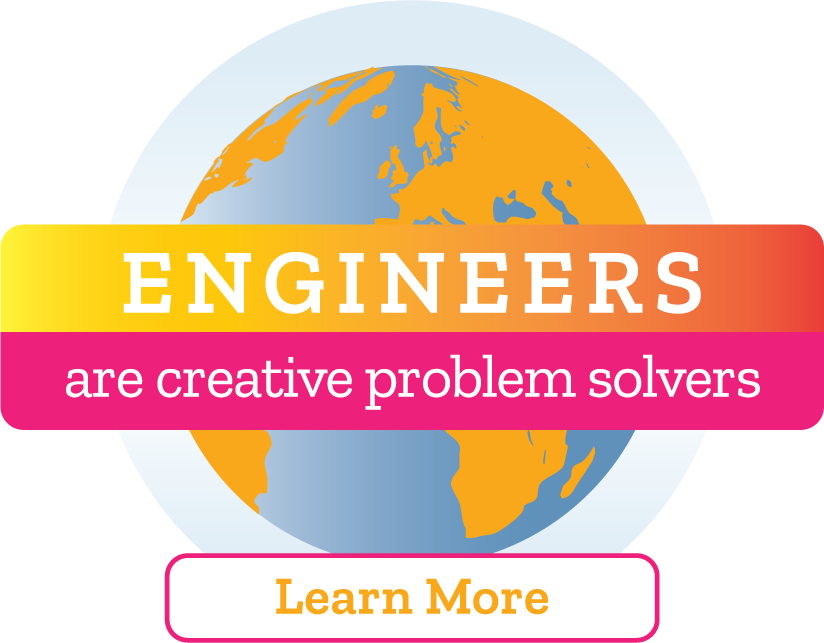Quick Look
Grade Level: 11 (10-12)
Time Required: 45 minutes
Lesson Dependency: None

Summary
Students are introduced to the concepts of evolution by natural selection and digital evolution software. They learn about the field of evolutionary computation, which applies the principles of natural selection to solve engineering design problems. They learn the similarities and differences between natural selection and the engineering design process.Engineering Connection
Engineers apply scientific principles to design and build devices, structures, materials and processes. Typically, engineers identify a problem, brainstorm possible solutions and then create and test prototypes. Creating computational models helps engineers predict how prototypes or design decisions will react given certain parameters. Evolutionary computation applies the principles of evolution by natural selection to identify the best potential solutions and often suggest possible solutions that engineers would never have considered.
Learning Objectives
After this lesson, students should be able to:
- Compare and contrast digital evolution with biological evolution.
- Explain how the principles of natural selection can be applied to solve engineering design problems.
Worksheets and Attachments
Visit [www.teachengineering.org/curriculum/print/mis_avida2_lesson] to print or download.Pre-Req Knowledge
A basic understanding of natural selection and the engineering design process is helpful.
Introduction/Motivation
(Show students the 15-slide Introduction to Evolutionary Computation Presentation, a PowerPoint file. Then lead a class discussion, asking students the following questions.)
- What do engineers do? (Engineers apply their understanding of scientific and mathematical principles to design and create devices, structures, materials and processes.)
- How do engineers decide what to make and how to make it? (Typically, engineers first identify a problem, then brainstorm possible solutions, and then create and test prototypes of the best design.)
- What is evolution? (The change in the genetic composition of a population from generation to generation.)
- What is the process of natural selection? (A process in which organisms with certain inherited characteristics are more likely to survive and reproduce than are organisms with other characteristics; the main driving force of evolution.)
- How might the process of evolution by natural selection be similar to the engineering design process? (The process of evolution by natural selection is similar to the engineering design process in that it "tests" random variations of organisms in an environment, just as engineers test and refine their designs. Both natural selection and the engineering design process produce solutions to problems, such as finding the optimal structure for a particular task.)
- How might natural selection and the engineering design process be different? (An important distinction between natural selection and the engineering design process is that one begins with the end in mind, while the other does not. Human inventions are the results of specific, goal-oriented research. Natural selection, on the other hand, is not goal-oriented. Engineers have recently begun to apply the principles of natural selection to solve engineering design problems using evolutionary computation.)
(Next, show students the PowerPoint presentation to review the concepts of natural selection and introduce evolutionary computation with Avida-ED. Have students answer the questions at the beginning/end of the presentation as a written assignment or the basis for a class discussion. Learn more about the small NASA antenna at the website listed in the References section. Show students the attached Avida-ED Tutorial Video to familiarize them with the software; see source information in the Additional Multimedia Support section). Following the lesson challenge students to complete the associated activity Competing Evolved and Engineered Digital Organisms to produce organisms with the highest fitness values in a particular environment through use of the free Avida-ED digital evolution software.
Lesson Background and Concepts for Teachers
About Avida-ED
You may wish to read the "Testing Darwin" article by Carl Zimmer in Discover Magazine to become familiar with the Avida software and the biological questions for which it is being used to answer. (See the Internet location of the article in the References section.)
Avida-ED is a software program adapted from the Avida research software described in the Discover Magazine article. Both programs can be described as instances of evolution in a model environment. The evolution itself is real; the digital organisms are subject to the process of natural selection just as biological organisms are. For biologists, the main advantages of using digital organisms are that 1) the environment can be precisely controlled and manipulated, and 2) the digital organisms reproduce much faster than any biological organisms. Avida-ED was created so students can learn about evolution by watching it in action. This powerful tool also enables students to design and perform their own experiments to test hypotheses about evolution in much the same way that researchers use Avida in their labs. Other lessons and activities for teaching evolutionary concepts using Avida-ED are published at www.teachengineering.org (search "Avida-ED").
The Avida-ED software is freely downloadable from http://avida-ed.msu.edu/.
About Evolutionary Computation
Please refer to the information in the attached PowerPoint file for an overview of concepts. For an excellent overview of digital evolution and its application in the design of computing systems, read the Harnessing Digital Evolution paper listed in the References section. For more background information, watch a short (3 minute) and/or a longer (18 minutes) video on evolutionary computation and its applications; the Internet locations are listed in the Additional Multimedia Support section.
Lesson Closure
As a class, review the answers to the discussion questions, as provided in the Assessment section.
Vocabulary/Definitions
Avida-ED: An educational version of the digital evolution software, Avida.
digital evolution: An instance of evolution wherein self-replicating digital organisms are subject to random mutation that is acted on by natural selection.
digital organism: A small, self-replicating computer program.
evolution: The change in the genetic composition of a population from generation to generation.
natural selection: A process in which organisms with certain inherited characteristics are more likely to survive and reproduce than are organisms with other characteristics; the main driving force of evolution.
Assessment
Written Answers: Collect students' written answers to the discussion questions posed at the beginning and end of the PowerPoint presentation (also listed below, with suggested answers). Alternatively, use their written answers as the basis for a class discussion.
- How is digital evolution similar to biological evolution? How is it different? (Suggested answer: Digital organisms in Avida have an instruction set similar to the genetic information that biological organisms have in their DNA. Like biological organisms, the instruction set codes for "traits" of an organism as well as replication instructions for reproduction. The genetic information can also be changed by random mutation. The process of natural selection increases the proportion of adaptive traits in a natural (in the wild) or artificial (computational) population. The main difference is that in digital evolution, a user determines the characteristics of the environment and may set particular parameters for the solutions.)
- How can the principles of natural selection be applied to solve engineering design problems? (Suggested answer: Digital organisms represent possible solutions to a particular problem. The user starts with one digital organism that is subject to random mutations to create many potential solutions. The user sets the characteristics of the environment to model real-world conditions and then allows the process of natural selection to determine the best solutions.)
Lesson Extension Activities
Conduct this lesson in conjunction with these other TeachEngineering curricula: Evolution of Digital Organisms lesson and its associated activity, Studying Evolution with Digital Organisms
Additional Multimedia Support
Show students the attached seven-minute Avida-ED tutorial video to familiarize them with the software. The same video also available on YouTube at: https://youtu.be/Z4fLAzYaKwE.
For teacher background information, watch Hampshire College's summary of evolutionary computation YouTube video (3 minutes) at: https://youtu.be/u1XSoB7rmL0
For teacher background information about evolutionary computation as well as predictions for future applications, watch this TEDxDanubia 2011 "Tech Kangaroos: Evolution at Work" YouTube video (18 minutes) at: https://youtu.be/WJX_wAKhg8A
Subscribe
Get the inside scoop on all things TeachEngineering such as new site features, curriculum updates, video releases, and more by signing up for our newsletter!References
Bluck, John. "NASA 'Evolutionary' Software Automatically Designs Antenna." Posted June 14, 2004. Release 04-55AR, NASA Ames Research Center, Moffett Field, CA. Accessed November 1, 2012. (Description and photos about the NASA satellite antenna designed with evolutionary software) http://www.nasa.gov/centers/ames/news/releases/2004/04_55AR.html
McKinley, Philip, Betty H.C. Cheng, Charles Ofria, David Knoester, Benjamin Beckmann and Heather Goldsby (Michigan State University). January 2008. "Harnessing Digital Evolution." IEEE Computer Society. 41 (2008) pp. 54-63. (In digital evolution, self-replicating computer programs—digital organisms—experience mutations and selective pressures, potentially producing computational systems that, like natural organisms, adapt to their environments and protect themselves from threats. Such organisms can help guide the design of computer software.) Accessed November 1, 2012. http://www.cse.msu.edu/~mckinley/digital-evolution.pdf
Zimmer, Carl. "Testing Darwin." Published online February 5, 2005. Discover Magazine (February 2005 issue). Kalmbach Publishing Co. (Digital organisms that breed thousands of times faster than common bacteria are beginning to shed light on some of the biggest unanswered questions of evolution.) Accessed November 1, 2012. http://discovermagazine.com/2005/feb/cover
Copyright
© 2013 by Regents of the University of Colorado; original © 2011 Michigan State UniversityContributors
Wendy JohnsonSupporting Program
Bio-Inspired Technology and Systems (BITS) RET, College of Engineering, Michigan State UniversityAcknowledgements
The contents of this digital library curriculum were developed through the Bio-Inspired Technology and Systems (BITS) RET program under National Science Foundation RET grant no EEG 0908810. However, these contents do not necessarily represent the policies of the NSF and you should not assume endorsement by the federal government.
Last modified: December 14, 2019






User Comments & Tips